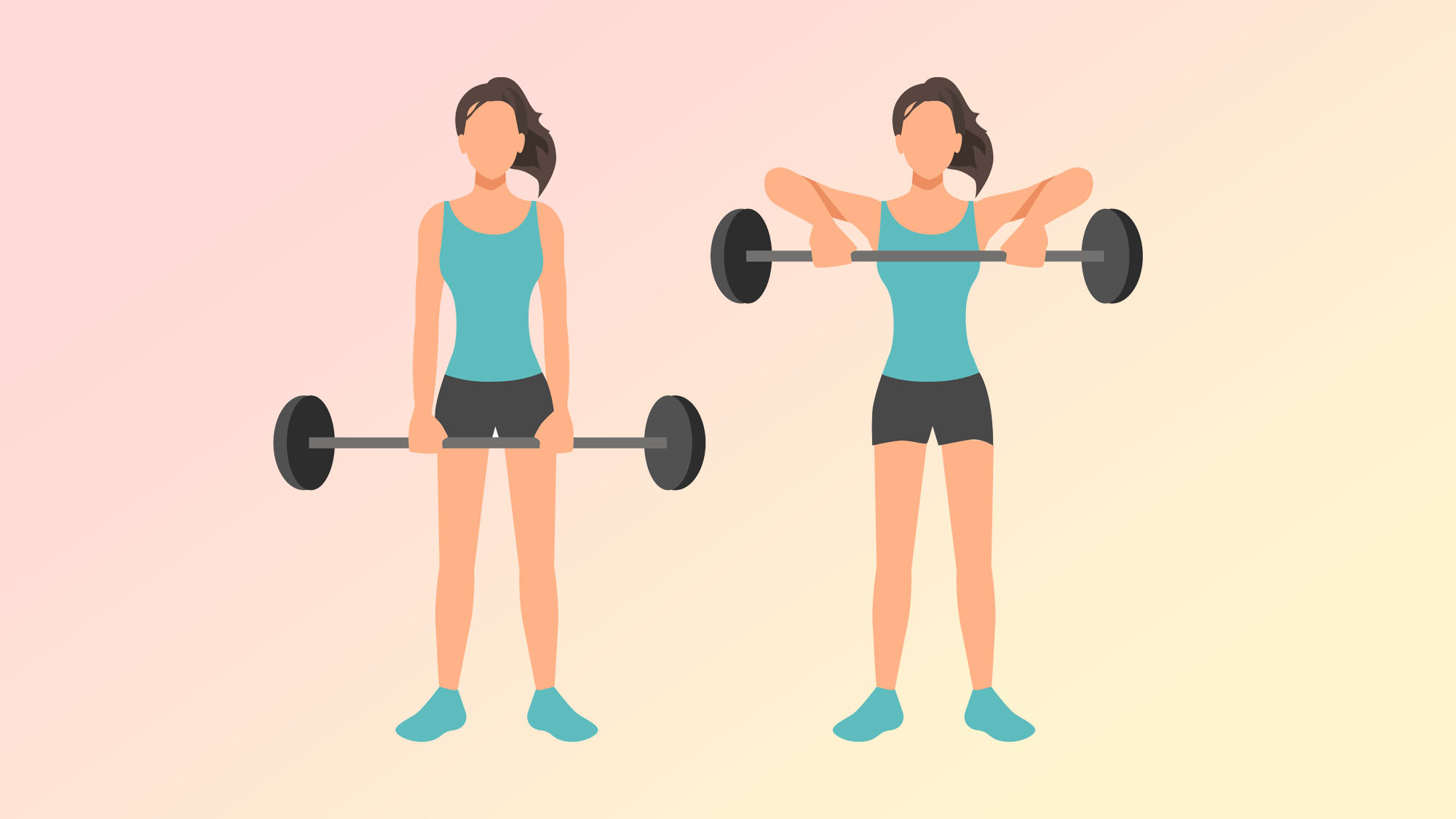This exercise is great for your upper body — try it now
Here's how to do it correctly

The upper back muscles can sometimes be neglected in training because they are out of sight, out of mind. It is impossible to see this set of muscles without a mirror and it can be tricky to train them. This is where the upright row, or stand up row, comes in. It is a great upper body movement to complement other exercises such as lat pulldowns, push-ups, and chest presses.
Neglect this exercise at your peril. Well-developed traps (trapezius) are important for maintaining aesthetic balance, but will also help performance in a variety of lifts such as squats, deadlifts, and the military press.
That said, it's an easy exercise to get wrong, and incorrect form can easily lead to shoulder injuries. Read on to find out how to perform an upright row with perfect form for maximal benefit.
What are the benefit of upright rows?

The upright row focuses on building up a variety of muscles including lateral deltoids, trapezius, and biceps. "This exercise is commonly used for aesthetic improvements aimed at improving upper body muscle definition," says Rosaria Barreto, personal trainer, and director at Vitality Hub.
Other benefits of adding upright rows to your strength routine include improving the posterior chain for better biomechanics and posture. However, it's one to approach with caution, "Research suggests this exercise has a high injury risk level compared to most other upper body exercises due to the positioning of the wrists and elbows," warns Barreto.
To avoid injury, the exercise needs to be performed correctly and only conducted after a proper warm-up. Make sure to complete five to 10 minutes of low to medium intensity cardio such as running, boxing, or cycling followed by dynamic stretches to prepare your body for this exercise.
How to do an upright row
This exercise can be performed with a barbell or two dumbbells (here are the best adjustable dumbbells for weightlifting at home).
Get instant access to breaking news, the hottest reviews, great deals and helpful tips.
Start by holding the handle of the weights close to your upper thighs with your palms facing inwards. Make sure your elbows are soft and shoulder blades pulled back. Start to guide the barbell/dumbbell up towards the chest area, leading with your elbows high and away from the body.
Pause once you reach shoulder height and focus on squeezing your traps. Then slowly lower the weight in a controlled manner back down the body to the start position. Keep your stomach and back muscles engaged throughout the exercise.
For muscle growth, it is best to perform the upright row with higher repetitions at a light to moderate weight. Perform between three to five sets of 12 to 15 repetitions.
If you are switching between a barbell and dumbbells then make sure they are a little less than half the weight of a barbell. If you were using a 30-pound barbell then exchange it for two 12-pound dumbbells.
Common mistakes that can lead to injury include lifting the elbows too high — ensure that you stop when your elbows are level with your shoulders.
Lifting too much weight can also quickly put too much stress on your shoulders, so choose a barbell or weight that will allow for a slow, controlled movement. It's also important to keep your upper body upright and to engage the core. This will enable the movement to isolate the shoulders and upper back.
How can you make an upright row easier or harder?
This exercise can be adjusted in a variety of ways to suit your fitness level. The most obvious adaptation is increasing or reducing the weight. You will know whether the weight is too heavy if you have to swing your hips to help bring the weight up.
If you have a history of shoulder, elbow, or wrist pain then using a kettlebell may be more suited due to the better placement of the hands whilst lifting.
Finally, there are a variety of ways to alter the style of an upright row which include using a cable machine or a resistance band. Check out the best resistance bands for all of your home workouts here.
Looking for an alternative arm workout? Here's more on how to do a single-arm row, and how to do an Arnold press.
Looking for more workout inspiration? Here's a resistance band workout that'll build your arms without weights, a guide to getting your form right for the dumbbell row, and an exercise that is just as good as planks at blasting your core.
Lily Canter is a freelance money, health and lifestyle journalist with more than 20 years' experience. She writes about fitness for Runner's World and Trail Running magazines and focuses on personal finance for Yahoo! Finance UK, Metro, The Guardian, and the Mail on Sunday. In her spare time she is an ultra-runner, canicrosser and running coach. She also co-hosts the award-winning podcast Freelancing for Journalists.

